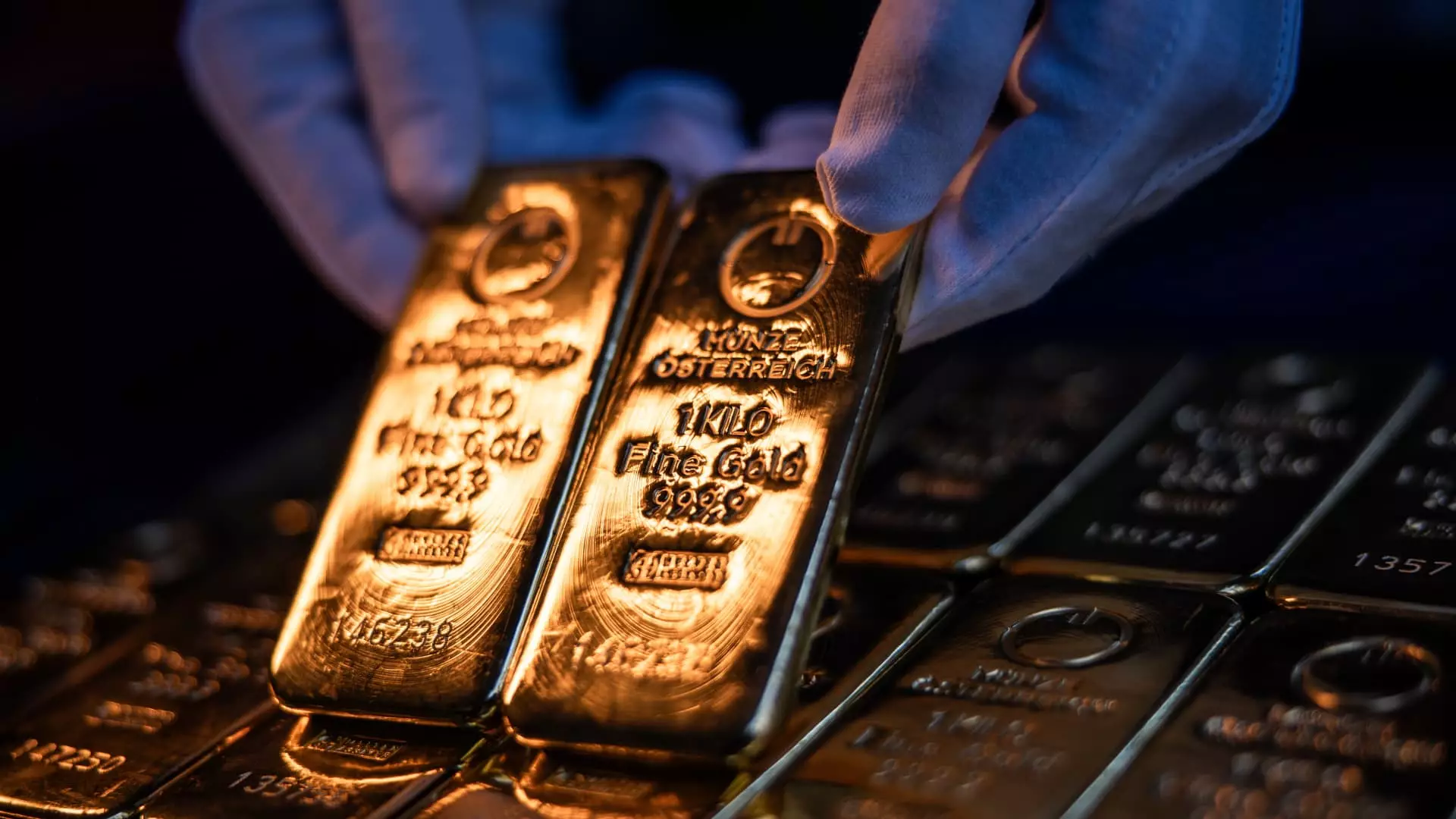In recent months, the gold market has witnessed a significant uptick in prices, sparking interest among investors who often see shiny assets as symbols of safety and potential profit. As of 2025, the SPDR Gold Shares fund (GLD) has surged approximately 11%, with a striking 42% increase observed over the past year. This presents an attractive narrative for investors, especially during uncertain economic times where traditional markets, exemplified by the S&P 500 which is only up around 1.5% in 2025, appear stagnant in comparison. However, this burgeoning interest raises an important question: Are investors making sound decisions, or are they falling into a common herd behavior trap?
Investment professionals are cautioning against the temptation to chase the current gold rally. Lee Baker, a certified financial planner, articulates this concern, reminding investors of Warren Buffett’s investment philosophy: “Be fearful when others are greedy, and be greedy when others are fearful.” With renewed interest in gold, Baker has started receiving more inquiries from clients specifically about this metal—a shift from a year earlier when such queries were uncommon. This dynamic not only signifies a potential market shift but also serves as a cautionary tale: when investor enthusiasm peaks, it often marks the beginning of a downturn.
Baker wisely advises that typical investor allocations to gold should not surpass 3% of a diversified portfolio. A knee-jerk reaction to attractive returns can lead many down the perilous path of buying high and selling low, which is often exacerbated by emotional decision-making rather than a grounded investment strategy. As he aptly points out, the key to profiting from gold investments lies not just in acquiring gold but in timing the selling—an endeavor that is fraught with uncertainty.
Investors frequently view gold as a “safe haven” asset, particularly in times of heightened economic uncertainty. Sameer Samana, a senior global market strategist at Wells Fargo, notes that the current climate fits this profile perfectly. Still, he warns that in genuine crises, bonds have historically outperformed gold. For many investors, the perception that gold serves as an effective hedge against inflation drives their purchasing decisions. However, this belief does not always hold up under scrutiny, as empirical data often shows mixed results regarding gold’s effectiveness as a reliable inflation buffer.
Further complicating this narrative is the geopolitical climate significantly influencing gold prices. Sanctions against Russia have created ripple effects in global markets, propelling central banks—most notably in China—to bolster their gold reserves as a strategic move away from U.S. Treasury bonds. This trend underscores the complex interplay between political decisions and investment behaviors, pushing gold demand upward and thus inflating its price.
Investment professionals encourage caution in light of these developments. Samana advocates against chasing current gold returns, emphasizing the importance of holding off on precious metals at levels where valuations have soared. Without a clear catalyst for sustained growth—such as prolonged global conflict—gold investors may face an impending correction.
For those still inclined to pursue precious metals, both Baker and Samana recommend indirect exposure through funds or equities rather than physical gold purchases. ETFs or stocks of mining companies provide greater liquidity, facilitating an easier exit should market conditions change. Additionally, investing in physical gold presents logistical challenges, including storage and insurance costs, which can erode returns over time.
Moreover, the allocation of gold in a diversified investment strategy should be carefully considered, with recommendations suggesting a range of 1% to 2% for balanced portfolios. Expanding one’s view to include a mix of commodities—encompassing energy and agricultural assets—can create a more resilient investment framework.
As market dynamics continue to evolve, the gold rush represents both opportunity and risk. Investors are urged to remain disciplined, avoiding the allure of quick profits in favor of long-term strategies that emphasize risk management and diversification. By understanding the broader economic context and the historical performance of gold relative to other assets, investors can better navigate the complexities of their portfolios. In such uncertain times, a thoughtful and measured approach will be paramount in making informed investment decisions. The shining allure of gold may be tempting, but prudence should prevail in the pursuit of wealth.


Leave a Reply